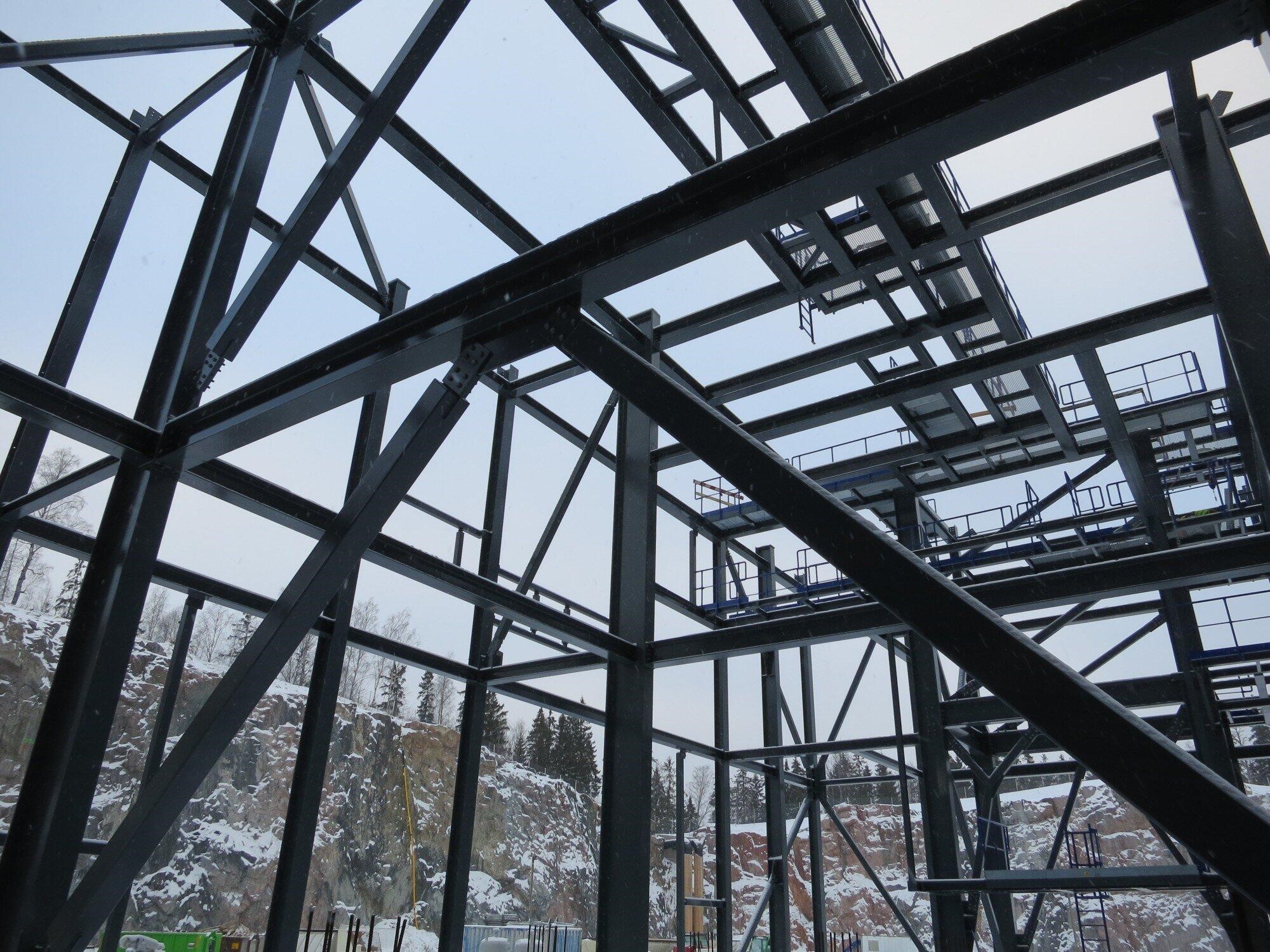How Different Types of Steel Beams are Used in Different Structures
Steel beams are crucial in construction for their strength and versatility. These beams come in various shapes and sizes, each serving specific structural needs. Choosing the right steel beam depends on factors like load requirements and building design.
In this blog, we will explore the types of steel beams commonly used in construction and their respective advantages.
I-Beams (H-Beams)
I-Beams, also known as H-Beams, are a mainstay in steel construction. Their design features a central web and flanges, making them strong and versatile. They are often used to support heavy loads in building frames and bridges.
The web resists shear forces, while the flanges handle bending. This makes I-Beams perfect for long spans and heavy loads. Thanks to their shape, they can be used in many types of structures.
When choosing I-Beams for steel construction, engineers consider the load and length needed. This ensures safety and efficiency. I-Beams are a reliable and effective choice for many building projects.
Wide Flange Beams
Wide Flange Beams are an essential type of construction beam, known for their wide flanges and thin webs. These features make them structurally efficient, distributing loads evenly. Often used in large buildings and bridges, they provide superb support due to their shape.
Engineers favor wide flange beams for their ability to handle both vertical and horizontal pressures. The wider flanges offer higher resistance against bending and twisting. This makes them a versatile choice for varied construction projects.
Selecting the right size and type of wide flange beam is crucial. This ensures that the structure remains robust under different loads. Engineers carefully consider these factors to optimize safety and performance in construction projects.
T-Beams
T-Beams are a fundamental piece of building materials in construction. They have a vertical section called the web and a horizontal top flange. This shape allows them to carry heavy loads with efficiency.
Engineers often use T-Beams on floors and roofs where extra support is needed. The design helps distribute weight, reducing stress on other parts of the structure. T-Beams are especially useful in concrete buildings due to their strength.
Choosing the right T-beam is essential for safety and efficiency. Engineers must consider the load and span requirements. This ensures that the building materials used in construction provide the best support possible.
Channel Beams
Channel Beams, often called C-Beams, have a C-shaped cross-section. This shape makes them ideal for many structural applications. They are commonly used in bridges, buildings, and even vehicle frames.
Channel Beams are good at supporting lighter loads. Their design provides extra stability in construction projects. Engineers pick Channel Beams for their easy installation and strength.
Selecting the right Channel Beam involves considering the load and span. This ensures the structure will hold up under different stresses. Proper choice and use of Channel Beam leads to safe and durable buildings.
Angle Beams
Angle beams are shaped like an L, with two perpendicular legs forming the angle. Their shape gives them high strength and makes them flexible for various uses. These beams are often used in framing, bracing, and reinforcing structures.
Engineers favor Angle Beams for their durability and ease of installation. They can also be customized using laser cutting materials, which provide precise sizes and shapes. This versatility allows them to fit perfectly into different types of construction projects.
When choosing angle beams, it’s important to consider the load and length needed. This ensures the beam can support the structure effectively. By using the right Angle Beam, engineers can create safe and strong buildings.
Hollow Structural Sections (HSS)
Hollow Structural Sections (HSS) have a hollow cross-section. They are strong and lightweight, making them great for construction. HSS are often used in bridges and buildings due to their high strength-to-weight ratio.
These sections come in different shapes like square, rectangular, and round. Engineers choose HSS because of its ability to handle various loads. The hollow design helps distribute weight evenly, reducing stress on the structure.
Selecting the right HSS is vital for safety and efficiency. Engineers must consider factors like load capacity and span.
Box Beams
Box beams have a hollow, rectangular shape and are popular in construction. They combine strength and lightness, which makes them useful over long spans. Their design helps to distribute weight evenly, reducing pressure on other parts of the structure.
Engineers use box beams in buildings, bridges, and other structures that need strong support. The beams can handle large loads without bending or twisting. They are often made of steel or wood, depending on the project’s needs.
Selecting the correct Box Beam is important for safety. Engineers consider the load and span to ensure stability.
Castellated Beams
Castellated Beams are steel beams with holes cut into their web. This makes the beams lighter and allows for longer spans. Engineers choose these beams for their strength and ease of use.
The holes reduce the weight without losing much strength. These beams are good for buildings that need long, open spaces. The holes also make it easier to run pipes and wires through the beams.
When picking Castellated Beams, engineers think about the size and placement of the holes. The beams must still hold up under the building’s load.
Composite Beams
Composite Beams are made by combining two different materials, usually steel and concrete. They work well together to make structures stronger and lighter. Engineers use Composite Beams in buildings and bridges to enhance load-bearing capacity.
The concrete helps to resist compression forces, while the steel handles tension forces. This combination ensures that the beam can support heavy loads without bending. The use of Composite Beams is common in large-scale construction projects.
Choosing the right Composite Beam involves understanding the project’s specific needs. Engineers take into account factors like the type of load and the span of the beam.
Choosing the Best Types of Steel Beams for Your Project
Choosing the best types of steel beams for your project is crucial for safety and strength. Each type of beam has unique features that cater to different building needs. Proper selection ensures the structure is stable and long-lasting.
Understanding the various types of steel beams helps in making the right choice. Engineers must consider load, span, and design requirements. This careful planning leads to effective and efficient construction.
Customization is not impossible with steel beams. Lasers can cut through steel materials to create the desired shape and size.
If you find this article helpful, check out our blog for more informative content.




